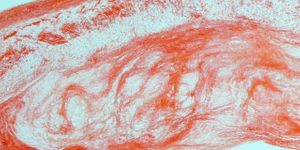NASA is Learning More About InSight's Landing Site Post-Landing
Following a six-month journey through space, NASA’s InSight spacecraft made a safe-and-sound landing on Mars’ barren surface last week. Comments made by the space agency after the landing signified how its next orders of business would involve deploying the lander’s solar array and surveying the landing site.
Image Credit: NASA/JPL-Caltech
Citing a public statement released by NASA, InSight’s solar array appears to have deployed without any problems. But the good news doesn’t stop there – preliminary assessments concerning the landing site provided mission scientists with valuable information denoting the lander’s health and status.
Mission scientists selected Elysium Planitia to be InSight’s landing site because it was flat and devoid of hazardous boulders. These factors meant that InSight could land safely without the risk of damage and that inclination would be negligible.
"The science team had been hoping to land in a sandy area with few rocks since we chose the landing site, so we couldn't be happier," explained JPL’s Tom Hoffman, InSight’s project manager.
"There are no landing pads or runways on Mars, so coming down in an area that is basically a large sandbox without any large rocks should make instrument deployment easier and provide a great place for our mole to start burrowing."
Related: NASA is still trying to get in touch with its Opportunity rover following several-month planet-wide dust storm
Slope was a particularly important factor in the landing because InSight was designed to function within a 15-degree inclination margin of error. Too much inclination would have prevented InSight from absorbing enough sunlight for power and impacted the lander’s ability to deploy its heat flow probe for studying Mars’ internal temperature. Fortunately, it touched down with only a 4-degree inclination.
NASA is already tapping into InSight’s camera systems to snap pictures of its surroundings, and as expected, there aren’t many rocks surrounding the lander. Picture quality is slightly hindered by the dust covers that were installed on the lenses to protect them during the landing, but these will soon pop off, enabling NASA to obtain higher-resolution photographs.
"We are looking forward to higher-definition pictures to confirm this preliminary assessment," added InSight principal investigator Bruce Banerdt of JPL. "If these few images—with resolution-reducing dust covers on—are accurate, it bodes well for both instrument deployment and the mole penetration of our subsurface heat-flow experiment."
Given the circumstances, it certainly seems like the InSight lander is off to a great start. After it deploys its equipment, the lander will provide NASA with unprecedented information about Mars’ internal mechanisms, including the planet’s internal temperature, the nature of Marsquakes, and the planet’s orbital wobble, among other things. This data could help planetary scientists better understand how Mars compares with Earth.
Source: NASA









